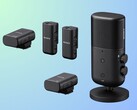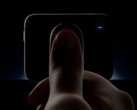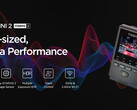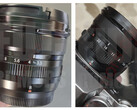Sony has just announced the ZV-1 II compact vlogging camera as the successor to the ageing ZV-1 that launched in May 2020. The biggest update to the Sony ZV-1 II over the original ZV-1 is the move from a 24-70 mm f/1.8-2.8 full-frame equivalent lens to an 18-50 mm f/1.8-4 full-frame equivalent lens. This effectively decreases the camera's reach and zoomed-in low-light performance, but the lens change also addresses complaints about the original ZV-1's minimum field of view being a little too tight for comfortable vlogging.
Apart from the lens change, Sony also updated the microphones on the ZV-1 II with the addition of a three-capsule microphone that automatically adjusts directional sensitivity based on where the sound and focus are. The ZV-1 II has the same one-inch, 20.1 MP, stacked BSI sensor as the original, but new semi-professional features and video recording modes put the camera in a bit of a weird spot in the market.
Sony added video modes, like S-Log3 and Cine V-log modes to the ZV-1 II — features that are used by creators and videographers that want to colour grade their work — but neglected to include 10-bit recording, wasting much of the gains of these modes. The ZV-1 II seems less like a complete product and more a way to funnel amateur video creators away from smartphones, towards dedicated cameras.
Sony also updated the ZV-1's interface to include a USB Type-C port instead of a USB Micro-B, but the Type-C port on the ZV-1 is still limited to USB 2.0 speeds (480 Mbps), restricting USB video streaming to 720p 30 fps, although a micro HDMI port is also included for 4K video streaming or external recording. The ZV-1 II's other major shortcomings include a lack of 4K 60 fps video, electronic image stabilisation that crops the FOV to a 24 mm equivalent, and disappointing battery life.
The lack of optical image stabilisation is perhaps the most egregious omission, given both Sony's marketing that focusses heavily on action shots and the excellent subject tracking autofocus Sony is known for. Battery life, likewise, is limited to 290 shots or 45 minutes of video recording, which is not terrible, but it does mean you'll be carrying around extra batteries, negating the advantages of the compact form factor somewhat.
The Sony ZV-1 makes for an interesting prospect for buyers that want slightly more performance than a smartphone offers but don't want to sacrifice the smartphone simplicity. For those looking to get into vlogging or videography and learn the craft, there are alternatives at about the same US$898 price point that should offer more flexibility and better performance. Sony's own ZV-E10 is an APS-C camera with similar vlogging aspirations that sells for only US$799 with a 16-50 mm zoom lens and only requires a small size compromise over the ZV-1 II.
Buy the Sony ZV-E10 with 16-50 mm f/3.5-5.6 lens kit on Amazon.






























